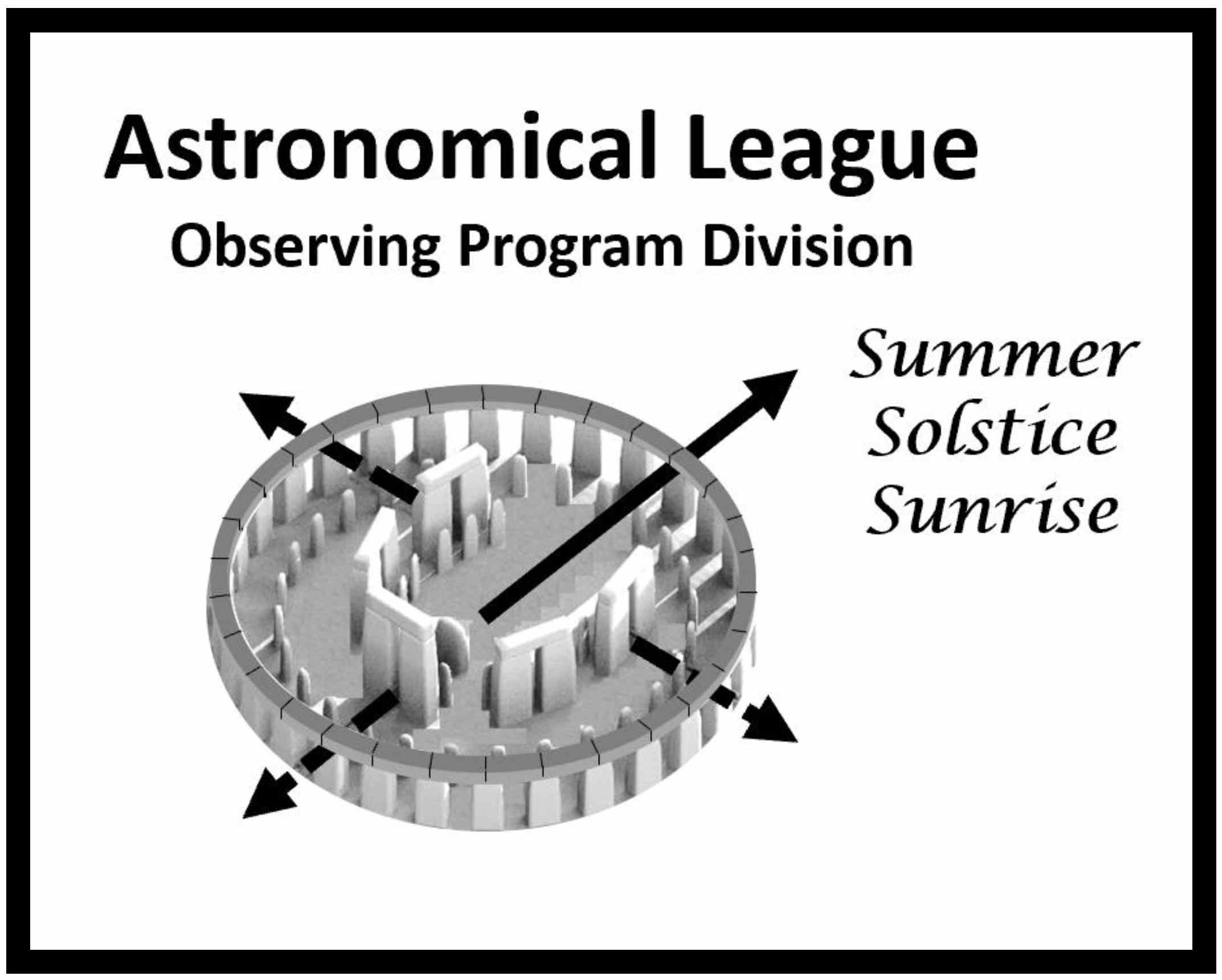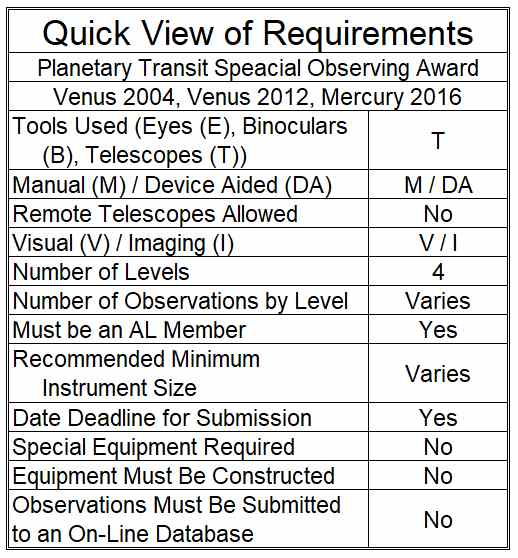Planetary Transit Special Award Coordinator: |
 |
Note:There are no current transits in this Award. IntroductionWelcome to the Astronomical League’s Planetary Transit Special Award site. The purpose of this award is to determine the characteristics of the Sun and Mercury from observations during the transit. Planetary Transits are rare events. They occur when a planet (Mercury or Venus) passes in front of the Sun as seen from Earth. This requires the inner planet to be at inferior conjunction along the line formed by the intersection of the Earth’s orbital plane and the planet’s orbital plane (the line of nodes). Only when these two conditions are met will a transit occur. |
 |
*** Safety Warning ***
Observing the Sun can be dangerous if not done correctly. Never look at the Sun directly. Even when it is low on the horizon and doesn’t appear to be dangerously bright, it is hazardous. When the sunlight passes through a lot of atmosphere, as it does when it is near the horizon, the blue light is scattered, so less overall light reaches you. But the red and infrared light passes through relatively undimmed and can harm your eyes. So do NOT ever look at the Sun. Use one of the safe techniques mentioned below.
What is a Transit?
Two planets – Venus and Mercury – have orbits that lie inside Earth’s orbit around the Sun. When one of these planets passes between the Earth and the Sun it is called an inferior conjunction. When this alignment of the Sun, Earth, and either Mercury or Venus is nearly perfect, we can observe Mercury or Venus as they move across the face of the Sun. This is called a transit.
Because the planets have slightly different orbital planes, transits do not occur every time there is an inferior conjunction. The last two transits of Venus were in 2004 and 2012. The next two will not be until 2117 and 2125. Mercury, however, transits more frequently. The last two transits of Mercury were in 2006 and 2016. The next two are on November 11, 2019, and November 13, 2032.
What is an Astronomical Unit?
The Astronomical Unit is a measurement that astronomers use to measure distances within the solar system. One AU is the mean distance from the center of the Earth to the center of the Sun. This distance was most recently defined in 2012 by the International Astronomical Union to be 92,955,807.27 miles (149,597,870.7 kilometers). We will be using this value and other information from the transit to determine characteristics of the Sun, Mercury, and Mercury’s obit.
Disclaimer
There are many assumptions and approximations in this process. Your results will vary depending on errors that creep into the process due to factors such as these:
- Planet orbits are elliptical, not circular
- Planets do not orbit in the same plane
- The Sun, Earth, and planet are seldom perfectly aligned
- We are ignoring the effects of the Earth’s rotation
- We are ignoring any effects associated with the Earth’s orbital movement
- You are taking measurements from photos of extremely distant objects
A brief note on eccentricity (or ellipticity). Eccentricity is a measure of the degree to which an ellipse is not a perfect circle. These are the values of eccentricity for planet shapes or orbits:
- e = 0: circle Eccentricity can be calculated using this formula:
- 0 < e < 1: ellipse e = (ra – rp) / (ra + rp)
- e = 1: parabola ra is the most distant point in the orbit (apoapsis)
- e > 1: hyperbola rp is the closet point in the orbit (periapsis)
Note: For planet shapes, we look at oblateness, but the concept is very similar. The flattening (f) can be calculated using this formula: f = (a – b) / a where is the equatorial diameter and b is the polar diameter.
Submitting Your Results to the AL Coordinator
The Coordinator must receive submissions for this program no later than December 11, 2019. There will be no exceptions. A certificate and a pin will be awarded to those Astronomical League members who participate.
Information Required:
|
 |
For details on the requirements for prior awards, click here.
Planetary Transit Special Award Coordinator:Aaron Clevenson
19411 Cluster Oaks Drive
Humble, TX 77346
Cell: (281) 852-4667
|



